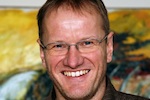Jünger Audio rides the Loudness wave
 In August 2010, the EBU published its Loudness Recommendation EBU R128, which details how broadcasters can measure and normalise audio using Loudness meters instead of Peak Meters. 47 manufacturers now support it in its patchy roll out across the EBU member states, with Germany’s Jünger Audio one of the ones benefitting from it the most.
In August 2010, the EBU published its Loudness Recommendation EBU R128, which details how broadcasters can measure and normalise audio using Loudness meters instead of Peak Meters. 47 manufacturers now support it in its patchy roll out across the EBU member states, with Germany’s Jünger Audio one of the ones benefitting from it the most.
The recent announcement by the EBU that German public and commercial TV broadcasters are harmonizing on the R128 Loudness recommendation for their audio levels is a case in point. Jünger Audio CEO, Peter Pörs (pictured), says: “Our frame-based C8000 audio loudness control system and our new T*AP TV Audio processors have been installed in numerous broadcast facilities throughout Germany, Switzerland and France.”
Pörs says that the company’s proprietary LEVEL MAGIC adaptive control algorithm, which is incorporated into all its loudness products, can adjust the audio level from any source at any time, with no pumping, breathing or distortion. “As a result it has become the algorithm of choice for line and real time processing nationwide, particularly amongst German public broadcasters such as ARD and ZDF who are actively involved with the EBU,” he adds.
German broadcasters aim to start transmission with newly harmonised loudness from 31 August, 2012. Other European countries that have also committed to EBU R128 include the Netherlands, Austria, Switzerland and France, which has linked the standard to legislation on loudness so that these laws can be better defined and enforced. “We are in the majority of broadcasters in France – including France Televisions, France2, and Canal+ Swiss television, Spanish television, Norwegian, expecting to be in Denmark, part of The Netherlands, Sky Italia…There is no movement towards it at the moment in the UK, they are sitting back and seeing what will happen in the rest of Europe.”
The algorithm is based on a simultaneous combination of an AGC, a Transient Processor for fast changes and a “look ahead” Peak Limiter for continuous unattended control of any programme material, regardless of its original source. Capable of using any kind of I/O (Analog and Digital) sources, as well as SDI, HD/SDI, Dolby 5.1 and all its related metadata, LEVEL MAGIC is available in a variety of configurations to suit different applications. And it complies with ITU, EBU and ATSC Loudness standards.
In Germany, ARD has installed a Jünger Audio C8000 system with LEVEL MAGIC and Dolby to handle the playout for all of its transmission channels distributed via the Star Point in Frankfurt. Eurovision distribution is managed there as well. The system is linked to the automation system to ensure maximum flexibility in audio control and to guarantee proper Dolby encoding under all circumstances.
ZDF has installed a C8000 system with LEVEL MAGIC and Dolby AC-3 encoding for playout of its transmission channels and for 3SAT, a German speaking channel reaching audiences in Austria, Switzerland and Germany that is cooperatively run by the public broadcasters in each country.
Other broadcasters in area that have chosen Jünger Audio equipment for loudness control include the German/French broadcaster ARTE and Astra Playout Services in Munich. Pro7/Sat 1 is using a C8000 system with LEVEL MAGIC and Dolby for ingest at its Munich transmission centre and for playout across all of its channels including those in Austria and Switzerland. They were the first in Germany to apply loudness control to all transmission channels. A similar situation exists at RTL Group, Germany’s largest commercial TV broadcaster, which is using a C8000/LEVEL MAGIC/Dolby system for ingest and playout at its Cologne Broadcasting Centre run by CBC.
“We are now receiving a lot of enquiries from the smaller independent commercial TV stations that are planning to install new hardware in order to comply with the EBU R128 recommendations,” Pörs says. “This interest is also extending to production companies that are aware of the need to make sure all material they produce for the broadcast companies is R128 compliant.”
In fact, Pörs says that live production – sports in particular – is one of the key areas likely to be affected by R128. “Loudness control under live conditions is the most critical area,” he says. “If you have a good sound and all of a sudden the crowd starts screaming at something, then that’s a problem for you.”

